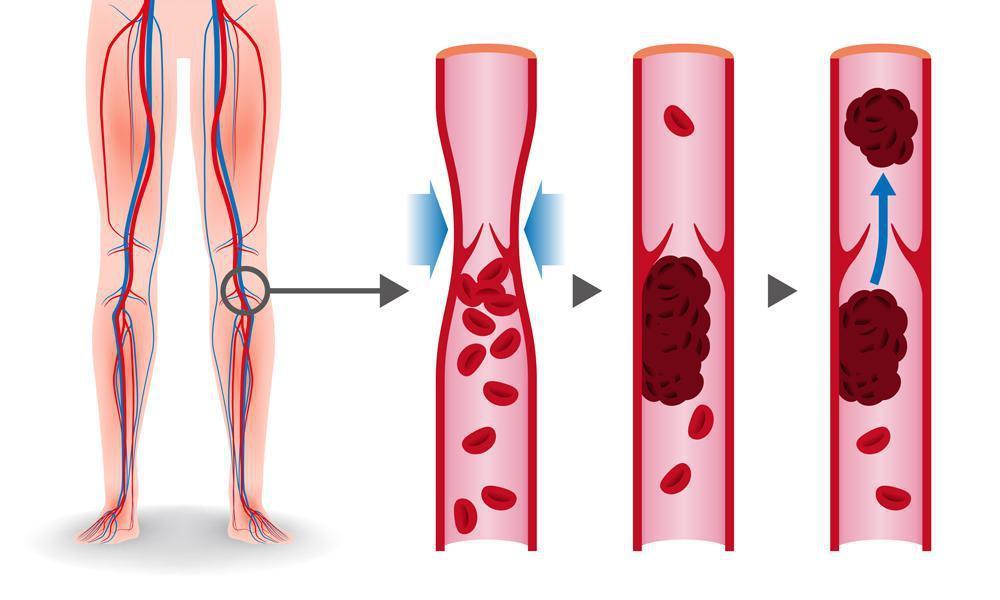Deep Vein Thrombosis, or DVT, is a condition that often goes unnoticed until it becomes a serious medical emergency. It involves the formation of a blood clot, usually in the deep veins of the legs, which can restrict blood flow and lead to severe complications if left untreated. The biggest danger? The clot may travel to the lungs, causing a potentially fatal pulmonary embolism.
But here’s the good news: DVT is highly treatable when detected early. That’s why understanding the DVT symptoms is vital. In this article, we’ll dive deep into what signs to look for, who is most at risk, and when to seek medical help.
What Is Deep Vein Thrombosis (DVT)?
Deep Vein Thrombosis is a condition where a blood clot (also called a thrombus) forms in one or more of the deep veins in your body. While DVT can happen in other parts of the body, it most commonly affects the legs. The condition can occur without warning and can be life-threatening if not promptly diagnosed and treated.
Clots can partially or completely block blood flow, causing pain and swelling. In more severe cases, a piece of the clot can break free and travel to the lungs — a situation known as a pulmonary embolism, which requires emergency treatment.
Why You Should Know About DVT Symptoms
Many people dismiss leg pain or swelling as something minor — maybe a muscle strain or overuse. However, the early DVT symptoms can be subtle or even silent. Knowing what to look out for can save lives.
Ignoring the signs can be dangerous, especially for individuals who are at higher risk due to recent surgery, prolonged immobility (such as long flights), pregnancy, or chronic medical conditions.
Common DVT Symptoms to Watch For
Recognizing the symptoms of Deep Vein Thrombosis early gives you the best chance of avoiding serious complications. Here’s what you need to know:
1. Swelling in One Leg (or Arm)
One of the most telling signs of DVT is sudden swelling in one leg or arm. The swelling usually affects only one side and may feel tight or heavy. In rare cases, both legs may be affected, but asymmetry is more common.
2. Pain or Tenderness in the Leg
DVT-related pain often starts in the calf and may feel like a cramp or soreness that doesn’t go away. The pain might worsen when walking or standing for long periods. Unlike a muscle ache, this pain often has no clear physical cause.
3. Warmth in the Affected Area
If a part of your leg suddenly feels warmer than the surrounding areas, it could be a warning sign of a clot. This warmth results from the inflammatory response triggered by the clot blocking blood flow.
4. Red or Discolored Skin
Skin over the clot may appear red or slightly bluish. This discoloration is a result of disrupted blood circulation and may be accompanied by itching or a burning sensation.
5. Veins That Are Hard or Painful to the Touch
Sometimes, the affected vein can feel firm or rope-like. It may be sensitive to touch, and this sensitivity can persist even when you’re resting.
Silent DVT: When There Are No Symptoms
It’s important to note that not all DVT cases show obvious signs. In fact, some people may not experience any DVT symptoms at all. These cases are known as “silent” DVTs and are especially dangerous because they can lead to sudden pulmonary embolism with no prior warning.
That’s why understanding your personal risk factors is just as important as knowing the symptoms.
Who Is at Risk for DVT?
DVT can affect anyone, but certain individuals are more susceptible. Risk factors include:
- Prolonged immobility (e.g., long flights, hospital stays)
- Surgery, particularly orthopedic procedures
- Pregnancy and postpartum period
- Obesity
- Smoking
- Cancer and cancer treatments
- Family history of blood clots
- Hormone therapy or birth control pills
Being aware of these risk factors can prompt earlier action if symptoms develop.
When to See a Doctor
You should seek immediate medical attention if you notice any of the DVT symptoms mentioned above. Don’t try to self-diagnose or wait it out — early intervention can prevent life-threatening complications.
If you experience chest pain, shortness of breath, lightheadedness, or coughing up blood, go to the emergency room immediately. These could be signs that the clot has traveled to your lungs, causing a pulmonary embolism.
Diagnosing DVT
Once you consult a healthcare professional, they may use several tools to confirm a DVT diagnosis:
- Ultrasound Imaging: The most common test to detect blood clots.
- D-dimer Test: Measures a substance released when a clot breaks up. High levels suggest clotting issues.
- Venography or MRI: Used in more complex cases to get detailed images of the veins.
Timely diagnosis ensures that appropriate treatment — such as blood thinners, compression stockings, or even surgery in severe cases — can begin without delay.
Prevention Tips for DVT
Preventing DVT often involves lifestyle adjustments and awareness. Here are a few tips:
- Stay Active: Regular movement promotes healthy blood circulation.
- Hydrate: Dehydration can make blood thicker and more prone to clotting.
- Avoid Long Periods of Sitting: On flights or long car rides, take breaks to stretch your legs.
- Wear Compression Stockings: These improve blood flow in the legs.
- Talk to Your Doctor: Especially if you have multiple risk factors, you may need medication or a prevention plan.
Living With DVT
If you’ve had a DVT, your doctor may recommend long-term lifestyle changes or medications to prevent future clots. Regular follow-ups and monitoring are essential.
Some patients may be prescribed anticoagulants (blood thinners) for months or even life, depending on their individual case. Staying informed and compliant with your treatment plan helps minimize risks of recurrence.
Conclusion
Deep Vein Thrombosis is a serious yet manageable condition if caught early. Being aware of DVT symptoms — from leg swelling to unexplained pain or warmth — is the first step toward protecting your health. If you notice any suspicious signs, especially if you have risk factors, don’t delay seeking medical advice.
Early detection can make all the difference. Stay informed, stay active, and don’t ignore the signals your body sends.

